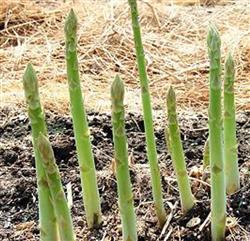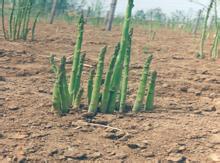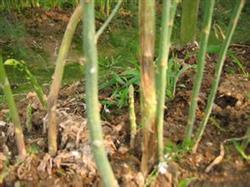Asparagus pest control 14 points negative mud insect

It is widely distributed in China, and there are 3-4 generations a year in Shandong and other places. The damage caused by adults and larvae gnawing on the tender stem or epidermis of asparagus can lead to the deformity of the bamboo shoot or eat it into a smooth rod, causing the bamboo shoot to become short, deformed or branched, and the quasi-leaves grow in clusters. Seriously dry and die. [control methods] ① clear bamboo shoot garden to get rid of insects, clean the fields before winter or early spring, remove withered branches and leaves, and concentrate on burning to eliminate overwintering adults. ② can be sprayed with 1500-2000 times of methomyl EC, 2000 times of aldicarb ultra-fine wettable powder, or 1500 times of 47% Lesbon EC before overwintering adults are unearthed, sprayed once every 7-10 days for 2-3 consecutive times. ③ mastered that spraying the above-mentioned insecticides in the seedling field and non-bamboo shoot field during the peak hatching period was beneficial to control the insect in the stage of low drug resistance and reduce the number of adults of the first generation. The field of collecting asparagus entered the peak period of egg hatching and larval damage in early August, which was the key period to control the pest, and the drug was stopped about 10 days before asparagus harvest.
- Prev

Key points of raising seedlings of asparagus in spring
Asparagus production generally adopts seedling transplanting, and the seedling emergence rate of centralized seedling transplanting is high, which can save seeds, reduce costs, facilitate centralized management, help to control diseases and insect pests and cultivate strong seedlings, prolong the growth period of the planting year and increase the yield of the second year. Seedlings can be oriented according to the growth direction of asparagus.
- Next

Occurrence and control of common diseases of asparagus
Asparagus blight 1. Symptoms. Asparagus vertical blight, also known as Fusarium wilt, is a soil-borne disease. For the first time, individual plants in the field turned yellow and wilted, the whole plant withered after the disease spread, the tender stem was infected, the leaves and stems turned brown or split longitudinally, the underground stem and root of the diseased plant showed brown disease spot, and the diseased part rotted in the later stage, producing white to pink.
Related
- Where is it suitable to grow horseradish in China? it is expected to see the middle altitude horseradish in Alishan.
- How to prevent tomato virus disease reasonably? (Control methods included)
- Many people like to plant towel gourd on the balcony. What are the main points of this method and management?
- What crops can chili peppers be mixed with?
- Fertilization techniques and matters needing attention in Tomato
- What are the grafting techniques for peach seedlings in spring?
- Harm and control methods of root swelling disease of Chinese cabbage
- What are the pests of sweet potatoes? How to prevent and cure it?
- Symptoms, causes and Control methods of navel Rot in Tomato
- The cause of "Cucumber rotten bibcock" in Farmers' planting Cucumber and its Control Plan

